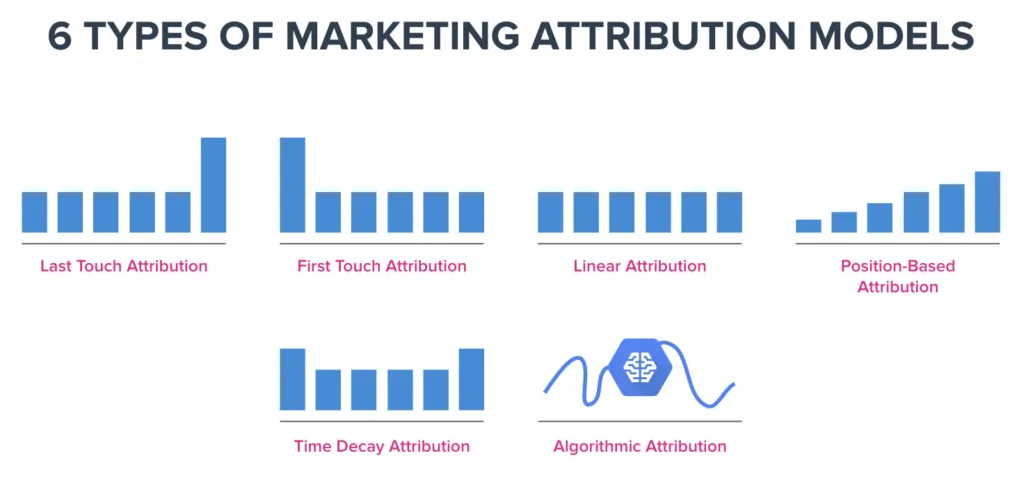
Master Marketing Attribution Models to Skyrocket ROI in 2025
Master Marketing Attribution Models to Skyrocket ROI in 2025
Stop wasting marketing budget on guesswork. Marketing attribution reveals exactly which channels, ads, and touchpoints drive real conversions, empowering data-driven decisions that boost ROI by up to 30%. In today’s multi-device, multi-channel world, understanding the full customer journey through advanced attribution models is no longer optional-it’s essential for sustainable growth and competitive advantage.
This ultimate guide explores every marketing attribution model from simple first-touch to AI-powered data-driven systems. Learn how to select, implement, and optimize the perfect approach for your business goals, sales cycle, and customer behavior patterns.

What is Marketing Attribution and Why It Matters
Marketing attribution is the science of assigning revenue credit to every customer touchpoint across their journey-from first awareness to final purchase. It transforms chaotic marketing data into clear, actionable insights that reveal true campaign performance.
Without proper attribution, marketers operate blind. A channel might appear successful based on last-click data while actually underperforming across the full funnel. Companies using sophisticated attribution models see 15-20% higher marketing efficiency and 25% better budget allocation.
The modern buyer journey spans 8-12 touchpoints across devices and channels. Attribution connects these dots, preventing over-investment in vanity metrics while uncovering hidden opportunities in awareness and consideration stages.
Single-Touch Attribution Models: Simple but Limited
Single-touch models assign 100% credit to one interaction. They’re easy to implement but ignore 90% of the customer journey.
First-Touch Attribution: Crediting Discovery
First-touch attribution gives full credit to the initial interaction that introduced a prospect to your brand. Perfect for measuring top-of-funnel effectiveness and brand awareness campaigns.
Use Case: A SaaS company discovers 60% of enterprise leads originate from organic LinkedIn posts. They double content investment, increasing qualified pipeline by 40% within one quarter.
- Pros: Simple implementation, highlights acquisition channels
- Cons: Ignores nurturing and closing efforts
- Best For: Demand generation, brand building
Last-Touch Attribution: The Default Trap
Last-touch attribution credits the final interaction before conversion. While intuitive, it dramatically overvalues bottom-funnel tactics while starving upper-funnel investments.
Common Pitfall: An e-commerce brand cuts display advertising after last-touch shows poor performance. Three months later, branded search volume drops 35% due to reduced awareness.
- Pros: Easy to understand, conversion-focused
- Cons: Starves awareness channels
- Best For: Short sales cycles, direct response
Lead-Conversion Touch: B2B Lead Gen Focus
Credits the interaction that generated a lead (form fill, demo request). Ideal for B2B marketers tracking MQL quality and lead source effectiveness.
Real-World Example: A cybersecurity firm finds webinars generate 25% of leads but 45% of pipeline value. They shift budget from paid search, improving cost per SQL by 60%.
Multi-Touch Attribution Models: The Complete Picture
Multi-touch models distribute credit across multiple interactions, providing nuanced insights into complex buyer journeys.
Linear Attribution: Equal Credit Distribution
Linear attribution splits credit evenly across all touchpoints. Simple yet fair, it prevents any single channel from dominating reporting.
Implementation Tip: Use linear as a baseline when transitioning from last-touch. Compare results to identify previously undervalued channels.
- Credit Formula: 100% ÷ Number of Touchpoints
- Best For: Balanced funnel analysis
Time-Decay Attribution: Momentum Matters
Time-decay attribution gives increasing credit to touchpoints closer to conversion. Reflects growing purchase intent as customers progress.
Case Study: A travel company implements time-decay and discovers email sequences 48 hours before booking drive 70% more value than previously credited. They optimize send timing, boosting revenue per email by 52%.
U-Shaped (Position-Based) Attribution: Highlighting Key Moments
U-shaped attribution assigns 40% credit each to first and last touch, with 20% distributed across middle interactions. Balances awareness and conversion focus.
Strategic Advantage: Prevents budget cuts to either acquisition or conversion channels. Maintains healthy funnel flow.
- First Touch: 40%
- Last Touch: 40%
- Middle Touchpoints: 20% total
W-Shaped Attribution: B2B Pipeline Focus
W-shaped attribution credits three key milestones: first touch, lead creation, and opportunity creation (30% each), with 10% for other interactions.
B2B Powerhouse: A software company using W-shaped discovers content syndication drives 50% of opportunities despite low last-touch credit. They increase investment, shortening sales cycles by 25%.
Advanced Attribution Approaches
Sophisticated models leverage data science for unprecedented accuracy.
Data-Driven Attribution: Machine Learning Precision
Data-driven attribution uses algorithmic analysis to assign credit based on actual conversion influence. Available in Google Analytics 4 and advanced platforms.
Performance Impact: Companies switching to data-driven attribution typically reallocate 15-25% of budget, achieving 20%+ ROI improvement within 90 days.
Custom Algorithmic Attribution: Tailored Perfection
Build bespoke models incorporating your unique business logic, LTV predictions, and offline conversions. Requires data science resources but delivers unmatched accuracy.
Rules-Based Attribution: Flexible Control
Define custom credit distribution rules based on business priorities. More sophisticated than standard models without requiring machine learning.
Choosing Your Perfect Attribution Model
Follow this decision framework to select the optimal model:
- Sales Cycle Length: <7 days → Last-touch; 7-90 days → Multi-touch; >90 days → Data-driven
- Business Model: E-commerce → Time-decay; B2B → W-shaped; Subscription → Linear/Data-driven
- Data Maturity: Basic → Single-touch; Moderate → Multi-touch; Advanced → Algorithmic
Implementation Roadmap
90-Day Attribution Transformation Plan:
- Days 1-30: Audit tracking, implement UTM standards, baseline current model
- Days 31-60: Test 2-3 models in parallel, analyze discrepancies
- Days 61-90: Select primary model, adjust budgets, document processes
Overcoming Common Attribution Challenges
Cross-device tracking, data silos, and privacy changes create hurdles. Solutions:
- Implement user-ID tracking across devices
- Use server-side tracking for privacy compliance
- Integrate CRM and marketing platforms
- Establish data governance policies
GA4 Attribution Reports Deep Dive
Access Model Comparison in GA4 to visualize credit distribution across models. Identify channels that gain/lose value when switching from last-click.
Future of Marketing Attribution
AI-powered predictive attribution will forecast conversion probability at each touchpoint. Privacy-first approaches using first-party data and federated learning will dominate.
Start Optimizing Today
Begin with GA4 model comparison. Document findings. Test budget reallocation based on multi-touch insights. The ROI gains compound quickly-companies mastering attribution achieve 3x marketing efficiency within 12 months.
Comment / Reply From
You May Also Like
Popular Posts
Newsletter
Subscribe to our mailing list to get the new updates!





